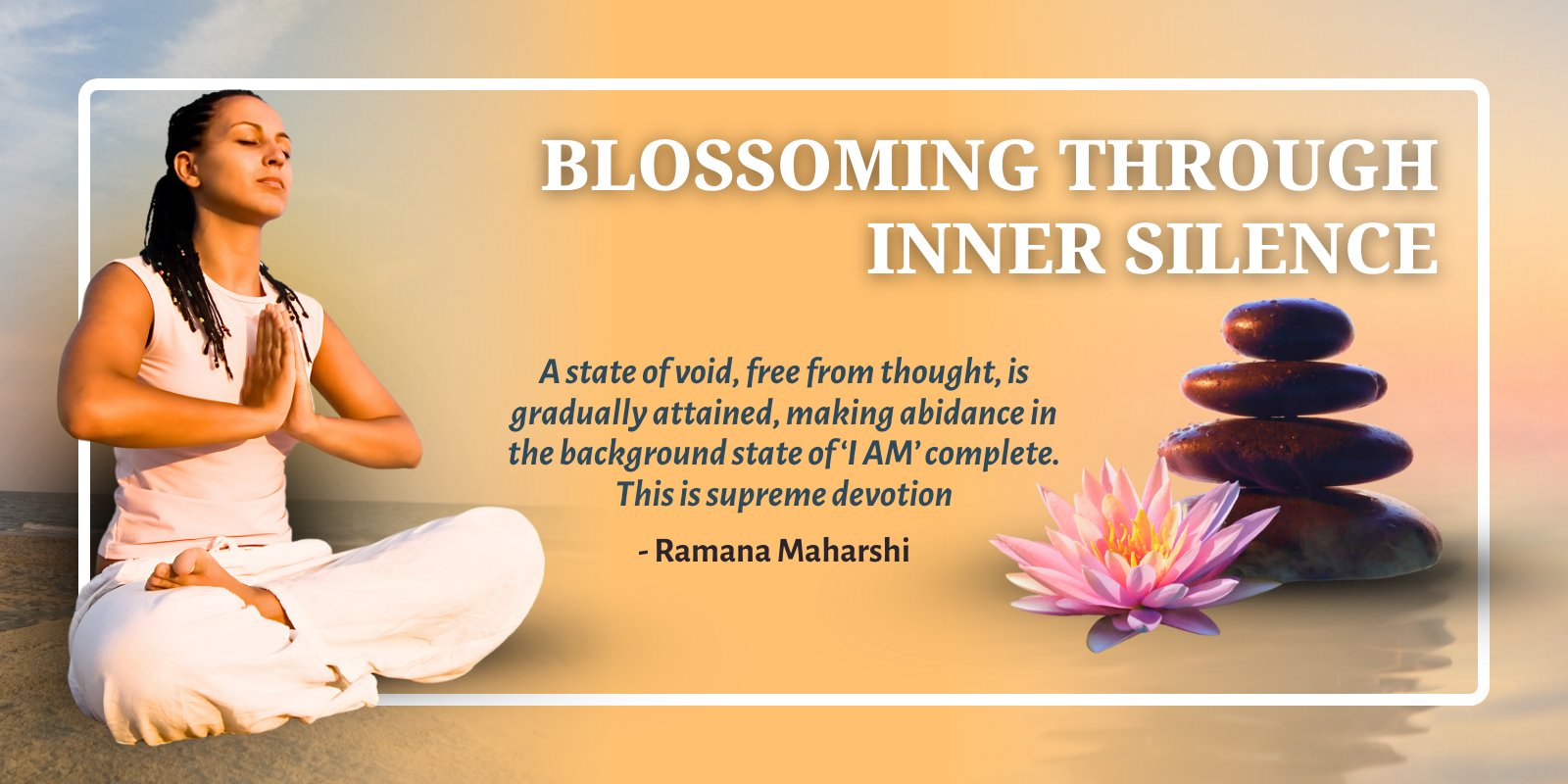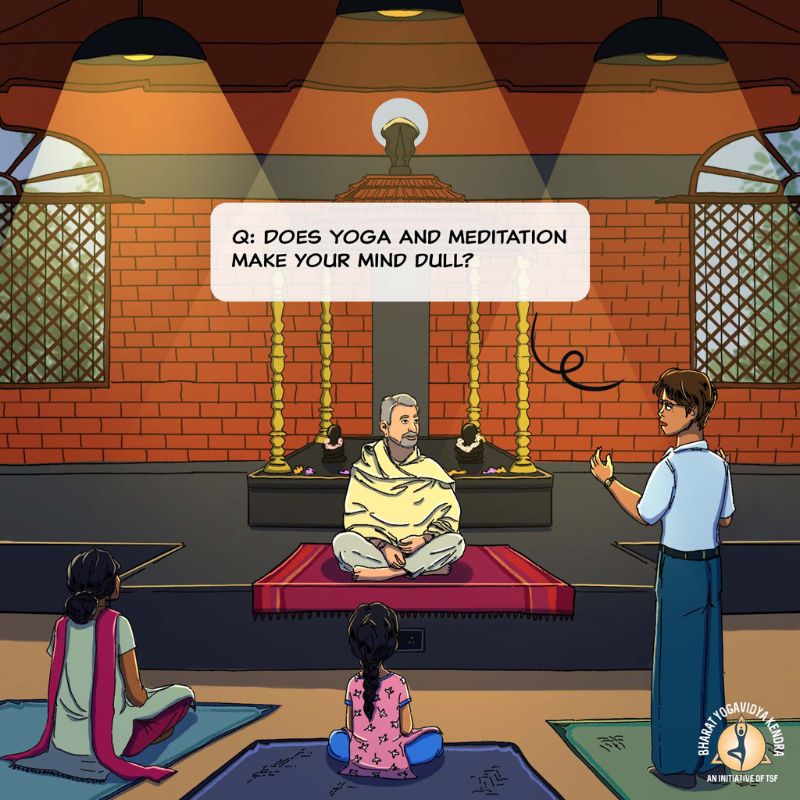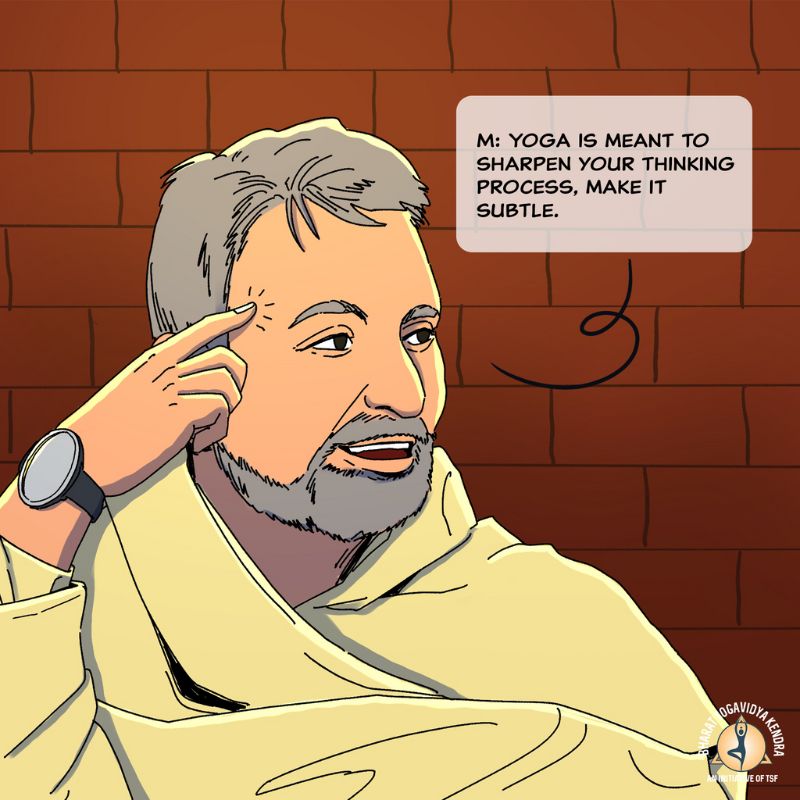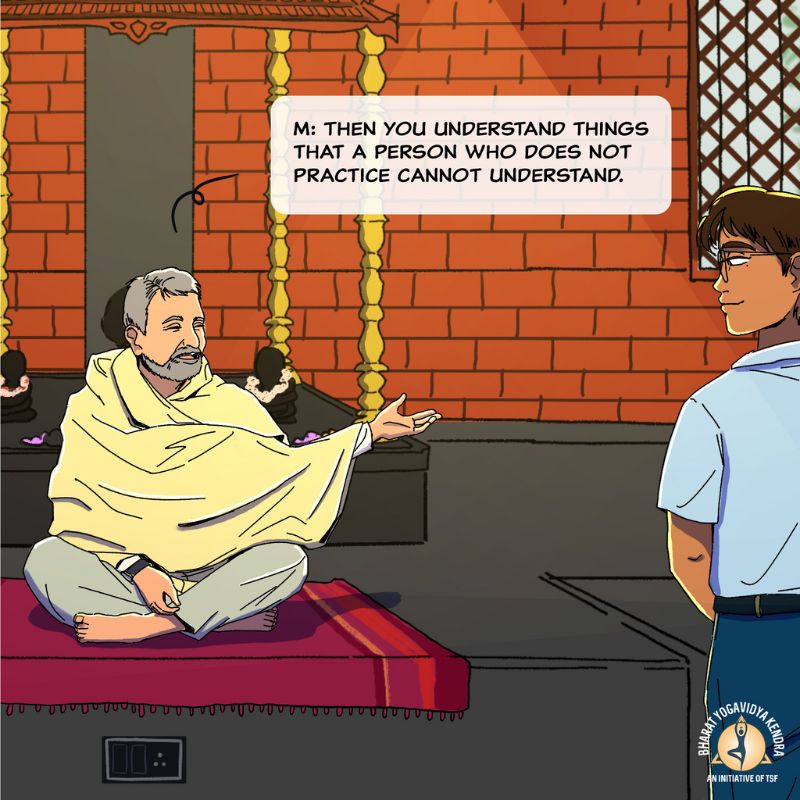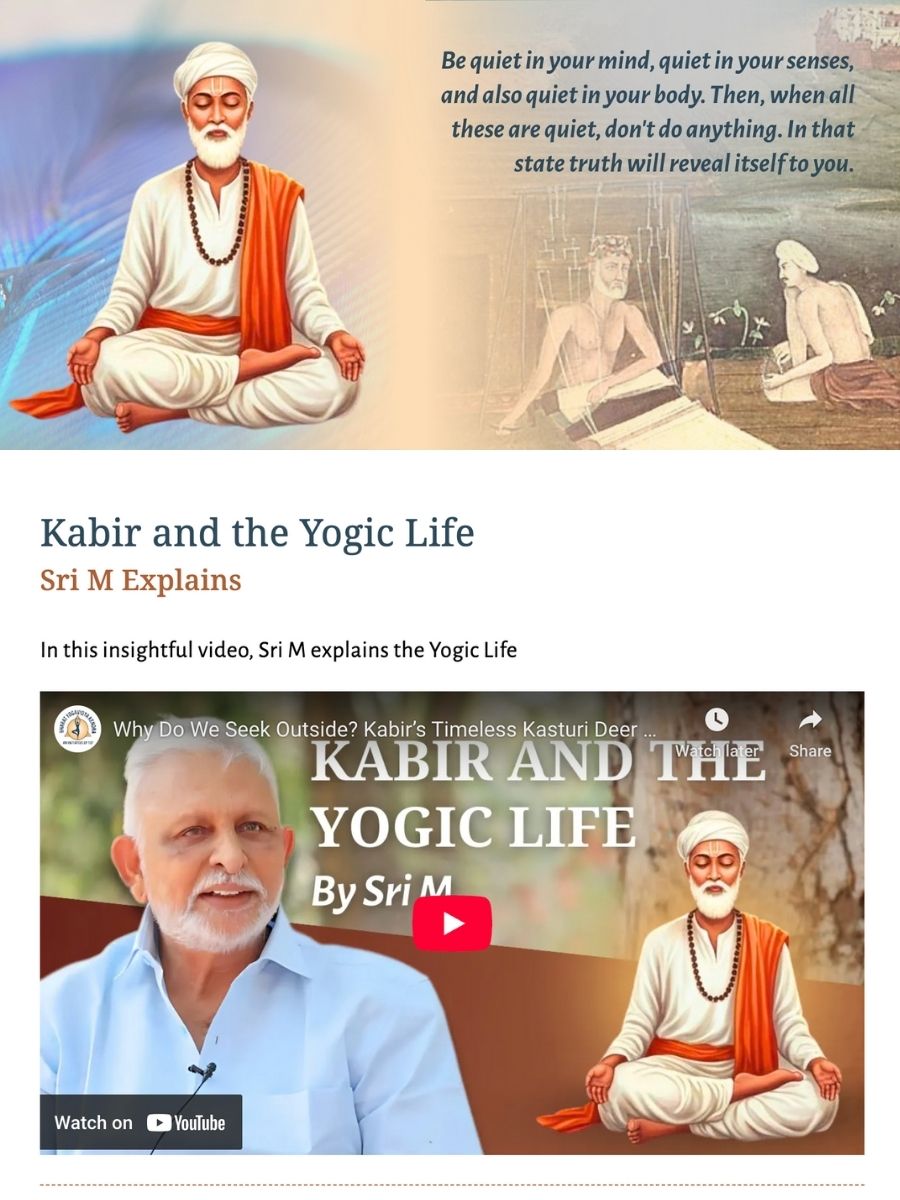Meditation: Blossoming Through Inner Silence
Autumn teaches by example. Leaves loosen their hold, the air clears, and what is not needed falls away. Sit a while and the same lesson appears inside: breath evens, the mind’s noise thins, and a quieter intelligence takes the seat.
In the Nath tradition that shapes our school, meditation isn’t an escape; it is honest housekeeping. We notice what clutters the room—old fears, shiny cravings, that tireless commentator—and we stop feeding them. What remains is simple: awareness, unforced. From there, kindness no longer needs a reason; it comes like light through an open window.
Try this cadence with our Yoga Sangha this month: arrive, spine tall, jaw soft. Count four breaths, then forget the counting. Between two thoughts, find the small clearing. Rest there. When a wave rises—let it. When it passes—let it. Touch the mantra lightly, like placing a lamp on a threshold.
You will not “become” someone in meditation. You will remember you were not the turbulence. And in that remembering, the ordinary turns luminous: hands washing a cup, feet meeting the floor, eyes meeting another without hurry.
Blossoming is quiet work. No trumpet, no finish line—only a fragrance that wasn’t there yesterday. Keep company with silence, and the heart will do what hearts do in clear weather: open, steady, without spectacle.
Om Tat Sat.
Sri M Explains
In this insightful video, Sri M explains the Yogic Life
Talk with M
BLOG POST
Enjoy the Sound of Silence

The world’s quietest room is the anechoic chamber at Orfield Laboratories in Minnesota. This specialized room is designed to absorb all sound, creating an environment so silent that people can hear their own internal body sounds, leading to disorientation and a profound sensory experience. Nobody has been able to stay here for more than 45 minutes.
Everybody seems to be looking for a little peace and quiet these days. But even such a reasonable idea can go too far if you decide to visit the lab above or a remote cave with no humanity in sight.
Solitude is a powerful spiritual tool for self-discovery and progress, and can be achieved by dedicating a few days a year to quiet reflection and meditation, away from daily distractions
Inner silence isn’t just about the absence of noise—it’s about creating space within yourself to listen, to realign, and to move through life with clarity. Inner silence helps dissolve our limitations and expands our horizon. It is an attempt to stop the endless chatter of our mind.
Did you know that we have ~ 70,000 thoughts daily , 75% negative and 95% repetitive.
The phobia of being alone, also known as Monophobia or Autophobia, is a persistent and excessive fear of being alone or of being in solitary situations. It stems from childhood trauma and insecurity. Humans are a social being and long periods of solitude can be daunting. That should not deter us from recharging with brief periods of solitude – Self Retreats are the solution to explore.
Key Aspects of Solitude and Self-Retreat
- Spiritual Progress:
Solitude is beneficial for spiritual growth, providing a crucial opportunity to observe one’s thoughts without the usual external noise. - Self-Study (Swadhyaya):
This is the core of self-retreat, focusing on introspection to understand one’s inner self and relationship with life - Temporary Separation from Distractions:
A self-retreat doesn’t mean abandoning responsibilities but rather finding quiet, undistracted time for a few days or even a day a week to sit quietly. - Simple Living:
During the retreat, focus on basic needs like simple food and a quiet place to rest, free from disturbance. - Digital Detox:
Switch off the internet and phones during retreats, as even when physically away, technology can prevent genuine solitude. - Face-to-Face with Self:
The goal is to be alone with oneself, allowing for a deeper awareness of the inner self without any external distractions. - Finding Inner Peace:
When external activities cease, peace can be realized, leading to a deeper understanding of one’s true nature beyond the constant mental “tussle”.
Self-Retreats are low cost stress busters that provide immediate succour. It’s not a holiday but a break from the day to day life – an opportunity to recharge, reflect and follow your passion for a few days.
A trend that is fast catching up across the world, there are many centres that are designed for self-retreats. Most of them are tucked away in remote corners in the midst of nature.
In an increasingly stressful world a solo retreat isn’t a luxury – it’s a necessity. When you’re constantly juggling responsibilities, it’s easy to lose sight of yourself. Taking time away allows you to step out of your usual roles and reconnect with who you are beneath all the expectations. It’s a chance to breathe, reset, and recharge before burnout takes hold.
So act now – if you are feeling overwhelmed and stressed, gift yourself a self-retreat. Enjoy the solitude and silence. Let the inner being blossom. It’s a great gift to give a near and dear one.
Sacred Grove – The Centre for Exploring Consciousness, an initiative of The Satsang Foundation is an ideal place for your next Self Retreat. Find more details in https://www.thesacredgrove.in
BOOK REVIEW
On Meditation – By Sri M
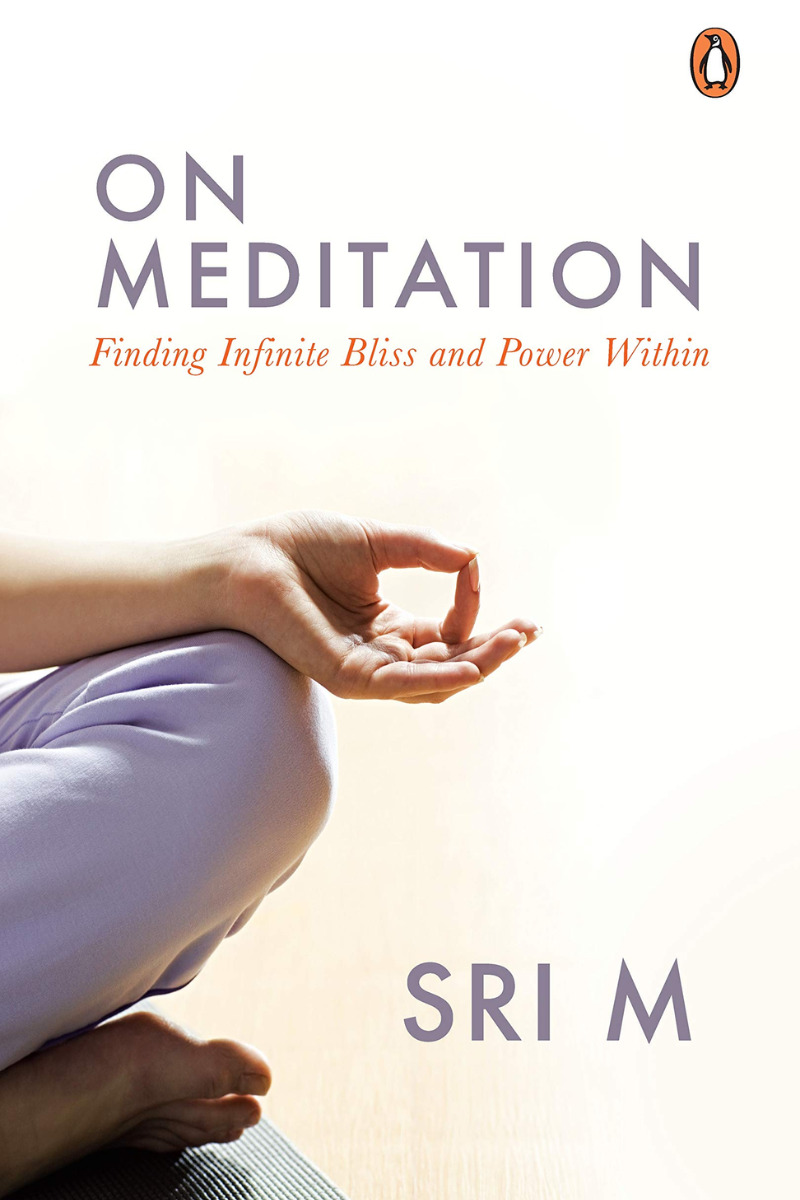
Any book written by Master Sri M is always full of treasures and gems. So is the book “On Meditation”.
The book is a must read for all whether someone who does not know anything about it or someone who has doubts, questions or for someone who “think” they know all about it😊.
It has 9 chapters and addresses topics starting with “Why to meditate?”, detailing the aspects of how to practice, various techniques of meditation, what kind of obstacles one may face during the practice, how to deal with the different experiences one may have during meditation, understanding the mind and the challenges one can face with their minds during meditation, how to integrate it into our daily life and finally importance of Masters or Guru’s guidance for one to continue with Meditation.
The entire book is in the Q&A format, so it does not come across as just another book on philosophy or a monologue presentation. The questions put forth are very practical, interesting, genuine, those which every normal person like us can connect to. Equally captivating are the answers given by the Master in such simple yet profound ways. In the process, he also breaks a lot of myths, mis understandings about the concept of Meditation.
There are many books on this topic. However, this book touches upon both esoteric & practical concepts. These concepts are explained in a very subtle and beautiful way that makes people think and go deep in understanding about Meditation.
I am grateful that I got to read this wonderful book & it gave me a lot of pointers to contemplate on. Hope you get to grab a copy, read and be blessed with a better and clear understanding.
YOGA GUIDE
Blossoming Through Inner Silence
Asana: Sukhasana (Easy Pose)
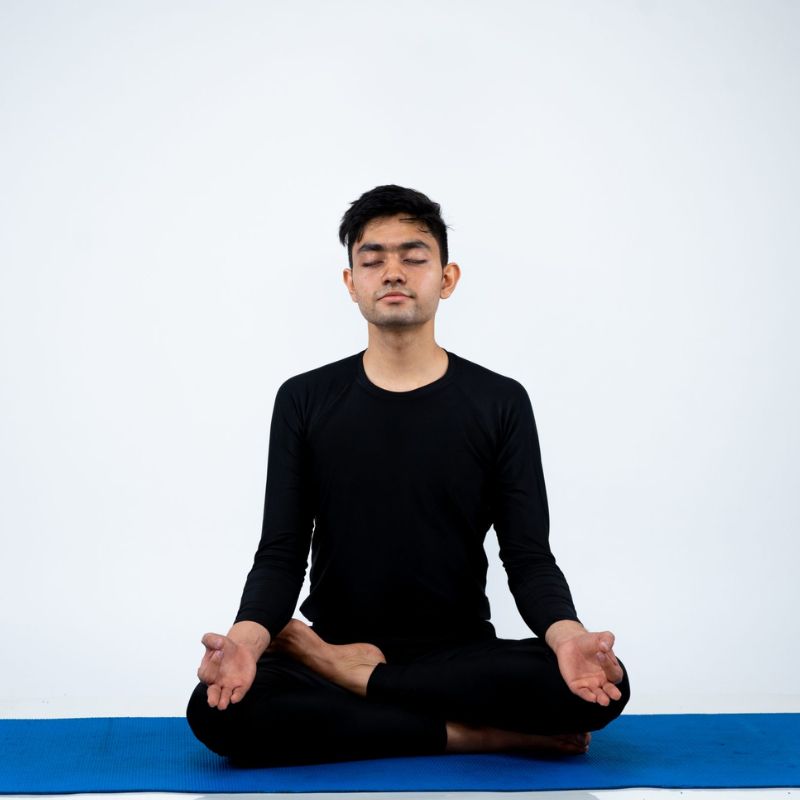
Maintain the same seated posture as described earlier to create a stable, comfortable base for meditation and breathwork.
- Sit cross-legged with a straight spine, shoulders relaxed.
- Rest hands on knees or thighs, palms up or down, whichever feels natural.
- Close the eyes gently and bring awareness inward.
Pranayama: Bhramari Pranayama (Bee Breath)
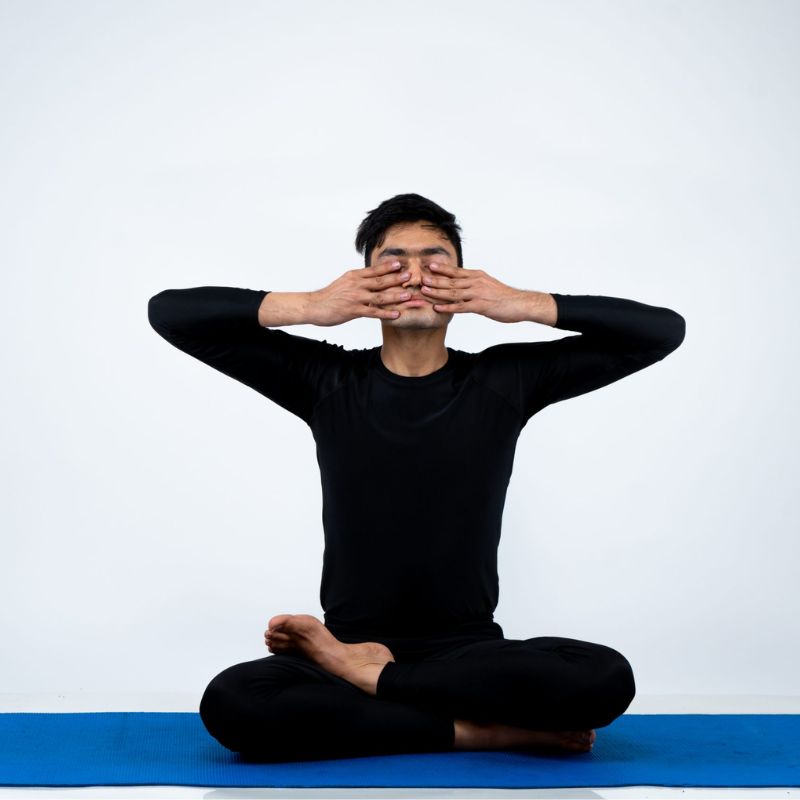
Bhramari Pranayama (Bee Breath). This pranayama cultivates deep inner calm and helps quiet the mind, making it an excellent choice for autumn’s inward turning and supporting inner awakening.
- Close your eyes and take a few natural breaths to settle.
- Place your index fingers gently on the cartilage between the cheek and ear (the tragus) to lightly close the ear canals.
- Take a deep breath in through both nostrils.
- As you exhale slowly, make a steady humming sound like a bee (“mmm”) with your mouth closed. Feel the vibration in your head and chest.
- Focus on the sound and the vibration, allowing the mind to settle into silence.
- Repeat this 5-10 times, maintaining slow, deep breaths.
- Bhramari Pranayama is known to reduce mental agitation, relieve stress, and promote a profound sense of peace, perfectly aligning with the idea of blossoming through inner silence during autumn’s introspective phase.
Together, Sukhasana and Bhramari Pranayama create a soothing practice that deepens inner stillness and awakens subtle awareness from within.
YOGA RESOURCE
Meditation: Cultivating Stillness for Personal Growth
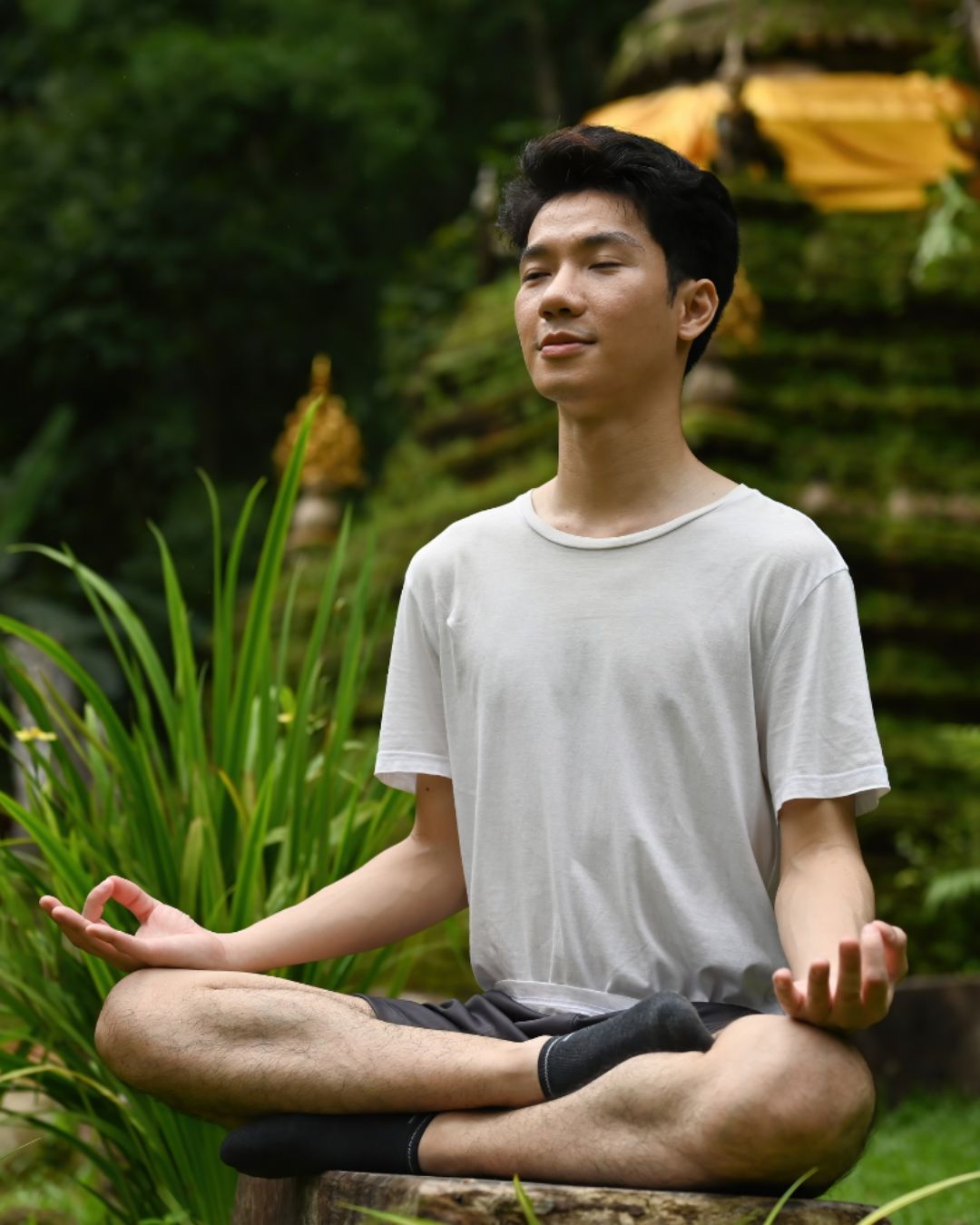
Meditation: Blossoming Through Inner Silence
Meditation, an ancient practice spanning millennia and cultures, is a profound journey into the depths of our own consciousness. It’s not about emptying the mind, but rather about cultivating a state of focused awareness and inner stillness. In a world of constant noise and external stimulation, meditation offers a sanctuary—a path to “blossoming through inner silence.”
What is Inner Silence?
Inner silence is not the absence of thought, but a state where the mind’s incessant chatter and emotional turbulence begin to subside. It’s the space between thoughts, the quietude that exists beneath the surface of our busy minds. This silence is not empty or void; instead, it is full of clarity, peace, and wisdom. By accessing this inner silence, we can:
- Gain Perspective: We can observe our thoughts and emotions without judgment or attachment, recognizing them as fleeting phenomena rather than definitive truths.
- Cultivate Calmness: The nervous system calms down, reducing stress hormones like cortisol and promoting a sense of well-being.
- Enhance Self-Awareness: We become more attuned to our inner landscape, understanding our patterns, triggers, and authentic needs.
The Practice: How to Blossom
The journey to inner silence is a personal one, and there are many paths to explore. The core of most meditation practices involves these fundamental elements:
- Mindful Breathing: The breath is our anchor to the present moment. By focusing on the sensation of each inhale and exhale, we ground ourselves and gently redirect our attention away from distracting thoughts.
- Body Awareness: Noticing the physical sensations in our body—the weight of our hands, the coolness of the air on our skin—can help us become more present and embodied. This practice connects us to our physical self and can be a powerful tool for releasing tension.
- Gentle Observation: Instead of fighting or suppressing thoughts, we learn to simply observe them as they arise and pass, like clouds drifting across the sky. This non-judgmental awareness is key to letting go of the need for control.
- Consistency is Key: Like any skill, meditation requires regular practice. Even a few minutes a day can begin to retrain the mind and create lasting positive changes in our well-being.
The Blossoming
As we consistently practice, we begin to notice the subtle yet profound “blossoming” that occurs within. This blossoming manifests in several ways:
- Reduced Stress and Anxiety: The ability to find inner stillness provides a powerful buffer against the stresses of daily life.
- Increased Emotional Regulation:We become less reactive and more responsive, able to navigate difficult emotions with greater grace and wisdom.
- Improved Focus and Clarity:A calmer mind is a more focused mind, leading to enhanced concentration and productivity.
- Deeper Connection to Self:The journey inward helps us reconnect with our authentic selves, our innate wisdom, and our intuitive guidance.
- Greater Compassion: As we cultivate kindness and understanding towards ourselves, it naturally extends outward to others.
Conclusion
Meditation is not a quick fix or a magical cure, but a lifelong practice of self-discovery. By creating a space for inner silence, we give ourselves the gift of truly listening—to our own hearts, our bodies, and the quiet wisdom that resides within. It is in this stillness that we find the fertile ground for genuine growth, allowing us to blossom into the fullest expression of who we are meant to be.
ALUMNI CONTRIBUTION
From Caterpillar to Butterfly
(A story for children about the power of Meditation)
Once upon a time, there lived an enormous being called Mind. Mind was very hardworking and always kept itself busy. It had a best friend named Thoughts, who helped it stay busy all the time.
Thoughts being a true friend, fed Mind with a lot of energy through emotions and feelings. And Mind lovedd to feast on these emotions that came with a lot of flavours like worry, fear, stress, grief etc. The more Mind ate, the stronger it became. Soon, Mind grew so mighty that it took control of the world it lived in, which was none other than the person’s life.
The person’s life slowly became a slave to Mind, feeling like a helpless caterpillar stuck inside a cocoon.
But Mind had a nemesis living in the very same person. This nemesis was called Super-Power. Although Super-Power was very strong, it had one drawback- it was fast asleep most of the time. And just like how Mind had a best friend, Super-Power also had one who was called Meditation. Unlike Super-Power, Meditation was more accessible and awake.
When Meditation saw how Mind was ruling the person’s life and making it feel miserable, it decided that enough was enough. It knew it was time to wake its friend, Super-Power, and save the person.
Meditation worked very hard. But waking Super-Power was not easy. Day after day, Meditation kept trying, never giving up. Finally, it discovered a very special energy called Stillness. With the help of Stillness, Super-Power slowly began to stir… and one fine day, it finally woke up.
When Super-Power awoke, it shone so brightly and felt so strong that even the mighty Mind trembled in fear. Mind begged to stay alive.
Super-Power, being kind, agreed but only on one condition:
“You may stay, but you may appear ONLY when I call for you.”
From that day onwards, the person was free, no longer a helpless caterpillar, but a beautiful butterfly breaking free from its cocoon flying joyfully in the open sky.
TESTIMONIALS OF TRANSFORMATION
After undergoing the Teacher Training Course at Bharat Yogavidya Kendra, my personal practice became well rounded. I incorporated stretches for the whole body, Pranayama, bandhas learnt from the Teacher Training Course. I found Sukshma Vyayama to be most impactful for me, my body feels lighter and energetic on days I do the full body stretches. I feel I can confidently share my personal experiences and insights on how doing yoga has improved my health and life to people. Now, I am focussing on my personal practice, growth and health.
–Balaji Kumar
Ayurvedic Wisdom

Autumn / Sharad Ritu is the season when the earth which had been cooled by the rains of Varsha Ritu will be heated by the Sun Rays again. So also we see that the Sun’s heat warms up the body causing Pitta Dosha to get imbalanced.
The hot & dry weather of Sharad October (Sharad Ritu extends mid Sept to Mid November) aggravates the digestive fire Agni leading to Pitta Dosha imbalance.
This can manifest as:
- Impaired immunity
- Blood (circulation) related health issues
- Skin problems
During Sharad Ritu, several festivals including Navaratri, Dusshera, Kojagiri, etc. are celebrated. These change festivals are not just traditions, but have scientific reasoning. The change in diet and lifestyle during these festivals is believed to help balance body & mind.
Navaratri’s Ayurvedic Connection– Navaratri is considered as the period of transition from one season to another, “Ritu Sandhi.” This 14 day period allows the body & mind to gradually adapt to the environment and physiological changes of the season. This therefore is the time for detoxification of the body & mind thru fasting, sattvic food and immersion in sadhana for spiritual balance. In conclusion, Navaratri offers a comprehensive, time-tested, health strategy rooted in Ayurvedic wisdom. Its practices foster not just physical detoxification, but spiritual & emotional recalibration In this age of fragmented approach to wellness, Navaratri Sadhana exemplifies a harmonious holistic model for seasonal health, mindful living, and deep ecological integration.
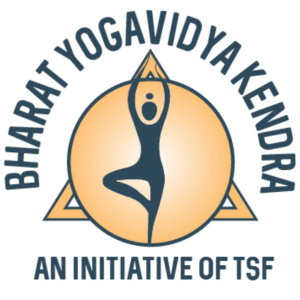
Thank you for reading

